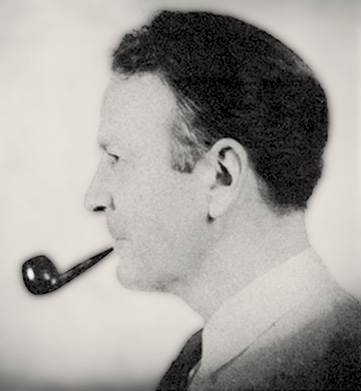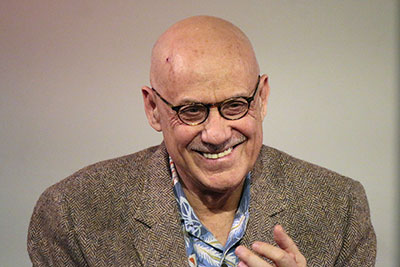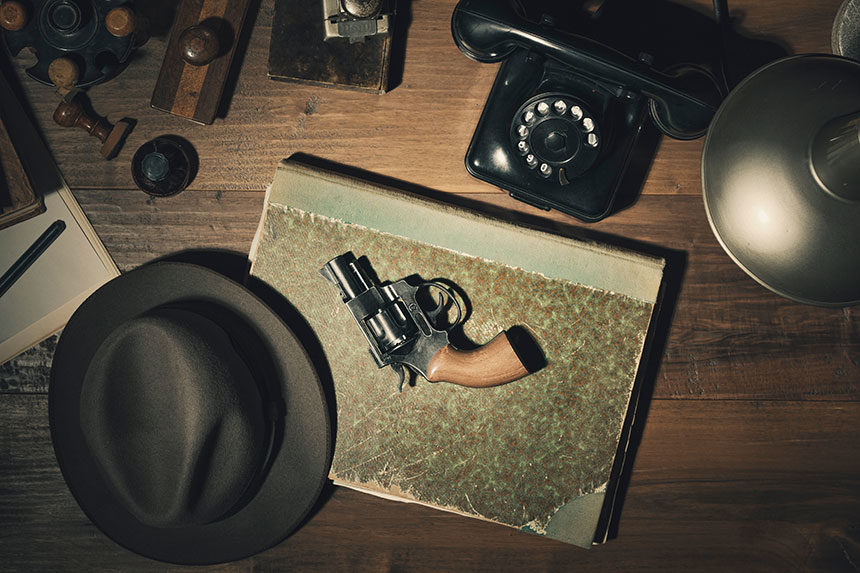
Back in the day, the glossy magazines had the high class, but the pulps had Black Mask. The pulps meant stories that weren’t aimed at polite society. They meant two-fisted action, tough detectives, and titillation. So pulpy that the pages almost gave you splinters, Black Mask crafted the aesthetic that would move to the screen as film noir. No-names became big names in its pages; big names became legendary. Killed in 1987 by a copyright dispute over the name and living under the alias A Matter of Crime, Black Mask was revived four years ago by Altus Press. The original first issue hit 100 years ago this month, so to acknowledge that centennial, here are ten writers that kept Black Mask alive, even when it was dead.
1. Dashiell Hammett

The New York Times called him “the dean of the ‘hard-boiled’ school of mystery writers.” Hammett worked as a Pinkerton detective and security agent and served in World War I before he started publishing his work. His first big character to appear in Black Mask was The Continental Op, who debuted in “Arson Plus” in the October 1, 1923, issue. The Op would be the main character in Hammett’s novel, Red Harvest, which would be filmed repeatedly (A Fistful of Dollars, Yojimbo, and Last Man Standing are all spins on the story). In the September 1929 issue, Hammett began serializing The Maltese Falcon, which introduced his no-nonsense Sam Spade. Nick and Nora Charles, the leads in Hammett’s The Thin Man and the spin-off films, never appeared in Black Mask.
2. Raymond Chandler

Chandler called Hammett “the ace performer” of their genre, but Chandler might be its poet laureate. An insightful critic, Chandler had a command of language that some call lyrical, and his over-the-top similes stuck in pop culture as a hallmark of detective fiction. No one else but Chandler could take a line like “It was a blonde. A blonde to make a bishop kick a hole in a stained-glass window.” and make it work. His first story for Black Mask was “Blackmailers Don’t Shoot” in December of 1933. The lead character, a P.I. named Mallory, would later be reworked into Chandler’s enduring creation, and the lead of all of his novels, Philip Marlowe.
3. Erle Stanley Gardner
Best known as the creator of Perry Mason, Gardner published his first Black Mask story in 1933 with “The Shrieking Skeleton” under the pseudonym Charles M. Green. Green was just one of many pen-names Gardner employed as he worked his day-job as a practicing attorney. Gardner created Mason in 1933 and serialized some of those novels in a variety of publications, including The Saturday Evening Post (over a dozen from 1937 on into the 1960s).
4. Marjory Stoneman Douglas
An environmental activist way before it was cool and a writer of more than 40 stories for The Saturday Evening Post, Douglas was another big name to pass through Black Mask. However, she was far from the only woman, as Black Mask regularly featured writers like Dorothy Dunn, who put out more than 60 shorts in the pulps, including Black Mask. Douglas’s lasting legacy comes from her defense of Florida’s environment in her book The Everglades: River of Grass.
5. Hugh B. Cave
Boasting one of the longest writing careers on record, Cave focused on writing for a living in 1930 at the age of 20; he continued writing into the 2000s. He wrote more than 1000 short stories spanning many genres, but crime and horror were his big things. Ten of those stories appeared in Black Mask and were collected in 2000 in Long Live the Dead. His best-known short story actually appeared in, of all things, The Saturday Evening Post. “The Mission” ran in the March 14, 1959, issue, and is set in Haiti, where Cave lived for a time. Cave lived long enough to be active online and to promote e-books as a new frontier. He won lifetime achievement awards from the Horror Writers Association, the International Horror Guild, and the World Fantasy Awards before passing in 2004 at 93.
6. George Harmon Coxe
Coxe was one of the writers who kicked off a franchise in Black Mask and kept it going in the pages of the magazine while letting it expand into other media. His main character was Jack “Flashgun” Casey, a crime scene photographer and detective. Coxe introduced Casey in Black Mask in 1934, publishing 22 stories and two serialized novels with the character in the magazine. The character was popular enough to be put on film in 1938 (Here’s Flash Casey) and became a radio show in the 1940s. Outside of the magazine, Coxe wrote 63 novels between 1935 and 1976, five of which starred Casey. Coxe received the Mystery Writers of America Grand Master Award in 1964.
7. Cornell Woolrich
Woolrich was a student at Columbia, right up until he got published. Woolrich deployed a number of pseudonyms because he wrote so much that he needed to spread everything around to maintain continuous publication. In 1937, he had a dozen stories in Black Mask alone while also contributing to Argosy, Detective Fiction Weekly, and more. Without a doubt, his most famous work is the story “It Had to Be Murder,” but you’d know it by the name of the film that Alfred Hitchcock made: Rear Window. A close second might be The Bride Wore Black, which was filmed by François Truffaut.
8. Max Brand
Born Frederick Schiller Faust, Max Brand used around a dozen pen-names to write in a variety of genres. As Brand, Faust wrote 170 westerns alone. That didn’t include his crime fiction, fantasy, horror, science fiction, and more that he doled out among other names, a body of work that would equate to more than 200 more books if simply measuring by word count. Faust’s most famous character was actually introduced in the pages of Cosmopolitan; that was Dr. Kildare, who would appear in short stories, novels, radio, film, and TV many times over the decades.
9. John D. MacDonald
MacDonald’s career was one of big numbers. After serving in the Army and getting an MBA at Harvard, he embarked on one of the most successful writing careers in history. He’d eventually sell 70 million books and publish over 500 short stories across all genres while also publishing under half-a-dozen pseudonyms. Even among all of that work, one character stood out; he featured Travis McGee, a “salvage consultant” who recovered stolen property, in 21 novels. In addition to a handful of stories for The Saturday Evening Post, MacDonald placed seven stories in Black Mask and another dozen in its British edition. MacDonald also wrote the novel The Executioners, which was adapted twice for film as Cape Fear.
10. James Ellroy

Born in L.A. with a remarkably dark life story, Ellroy seemed fated for the noir vibe. His first novel came out in 1981, long after the original heyday of Black Mask, but he got published in The New Black Mask, which was the temporary ’80s revival. It’s fitting that he did, because Ellroy is certainly the descendant of those earlier writers, a modern avatar of heavy pulp and pitch-black intent. His most famous work is his “L.A. Quartet,” four novels dealing with crime in the 1940s and 1950s: The Black Dahlia, The Big Nowhere, L.A. Confidential, and White Jazz. Ellroy continues to work on a new L.A. Quartet (the second in that series was published last year) and still writes in his particularly tough and hard-bitten prose. Brave souls should take a look at his autobiographical My Dark Places, in which Ellroy frankly discusses the murder of his mother and his own brushes with crime.
Featured image: Shutterstock
Become a Saturday Evening Post member and enjoy unlimited access. Subscribe now



